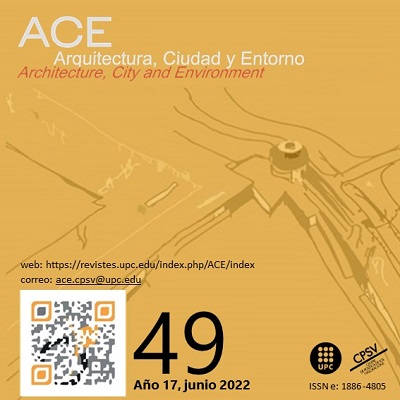School Architecture for Primary Education: A Case Study of Uruguay
DOI:
https://doi.org/10.5821/ace.17.49.10497Keywords:
Architectural design, educational reform, evolution, Latin AmericaAbstract
Globally, there are important contributions in the field of school architecture with outstanding experiences of the link between architecture and education. Uruguay has instances that show relationships between the architectural response of school spaces and teaching trends, influenced by educational movements. This work presents the most significant architectural trends from the 20th century to the present. The beginning of the 20th century is characterized by profound changes in educational policies following educational reforms that cause transformations in the conception of the school space. In the first half of the 20th century, the educational system is questioned in Latin America, as a result of the ideas of the New School that arise in Europe and the United States. The school space is spatially conceived as pavilions in the green and in direct relationship with the outside. Architectural ideas, of the second half of the 20th century, are based on systematic school design that prioritizes the use of prototypes, definition of minimum areas and prefabrication to build quickly and comply with massive construction plans. The beginning of the 21st century is marked by the introduction of new educational policies and information technologies where the need to rethink design practices is discussed. The research is aimed at discussing the theory of architectural design and the influence of pedagogical phenomena in school architectural solutions. In this way, it seeks to contribute with research that sheds light on educational architecture in the region.
Downloads
Published
Issue
Section
License
| INTELECTUAL PROTECTION CRITERIA |
At this moment, it is count with the "Oficina Española de Patentes y Marcas", while global protection it is being processed by the World Intelectual Property Organization (OMPI/WIPO). Nevertheless the International Standard Serial Number Office (ISSN) has given the following numbers ISSN: 1886-4805 (electronic version) and 1887-7052 (paper version). All articles will be peer reviewed, using double blind reviewing. |
| COPYRIGHT |
The article contents and their comments are authors exclusive liability, and do not reflect necessarily the journal editor commitee's opinion. All ACE published works are subject to the following licence CC BY-NC-ND 3.0 ES http://creativecommons.org/licenses/by-nc-nd/3.0/es/ It implies that authors do not hold nor retain the copyright without restrictions but only those included in the licence. |


































